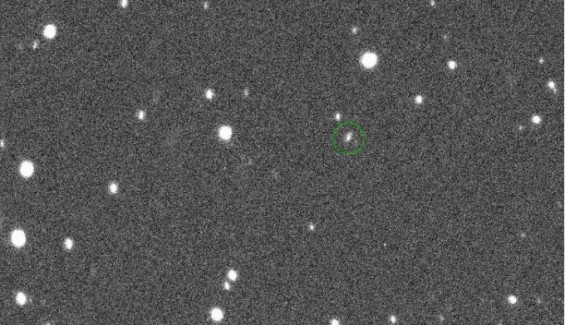
Video capture of the asteroid Apophis. Provided by Korea Astronomical Research Institute.
The asteroid’Apophis’, with a diameter of 370m, approached about 16.8 million kilometers from Earth at 10:15 on the 6th of this month Korean time and passed around the Earth at a speed of 4.58 kilometers per second. It approached and passed by 43 times the distance between the Earth and the Moon.
The Korea Astronomical Research Institute succeeded in the observation on the 10th of this month and released the video through tracking and observation using the’Space Object Electro-Optical Surveillance System (OWL-Net)’ from February.
Since the asteroid Apopis was first discovered in 2004, the possibility of a collision with the Earth has been steadily raised. It is expected to pass by about 37,000 km, very close to Earth at 6:46 on April 14, 2029.
The Apophis observation video released by Cheon Mun-yeon was taken from OWL-Net Unit 4 located at the Lemon Mountain Observatory in Arizona, USA.
In particular, Cheon Mun-yeon is conducting preliminary research on asteroid exploration missions with the aim of direct exploration of Apophis in 2029. The proximity of the asteroid to Earth means that with little fuel, the probes are in good condition to reach the asteroid.

The area marked with a green circle is the asteroid Apophis. It is an artificial satellite that trajects downward in the second half. Provided by astronomical kites
Among the more than 2,000 Earth-threatening asteroids, Cheon Mun-yeon has selected’Apophis’ as the only asteroid suitable for exploration as the’speed increment’ of the probe is less than 6 km/sec. The speed increment refers to the speed required to escape from Earth’s gravity and travel at the same speed as the asteroid. The lower the speed increment, the less fuel is required for the probe, creating a favorable condition for asteroid exploration.
For the observation of Apophis, the researchers of Apophis have formed an international joint observation network with more than 30 observatories around the world, and are leading the tracking and characterization research projects. It will be used to determine the rotational state of Apophis and derive a shape model to design a payload during asteroid exploration missions and to create a probe mission scenario.
According to the National Aeronautics and Space Administration (NASA) Jet Propulsion Research Institute (JPL), Apophis is one of four Earth-threatening objects with a higher probability of a collision with Earth in 100 years than 1 in 1 million. This includes the asteroid’Benu’. NASA’s asteroid probe’OSIRIS-REx’ was launched in 2016 and landed in Benu in October 2020 and successfully collected soil samples.
